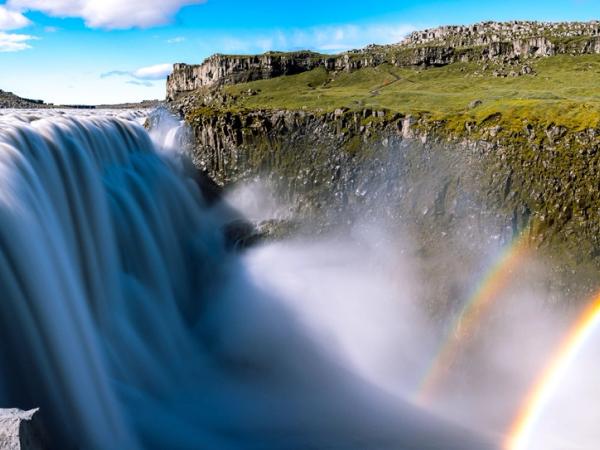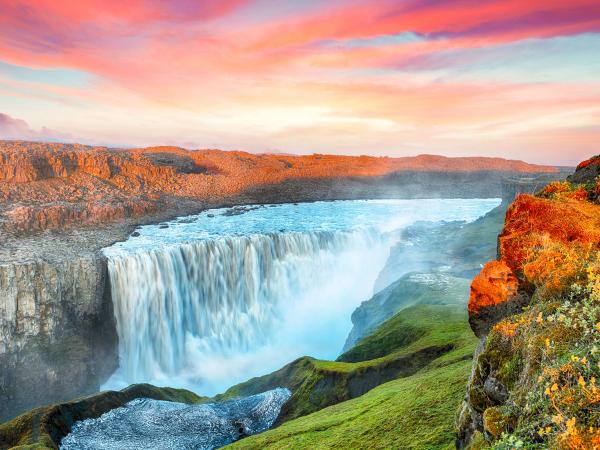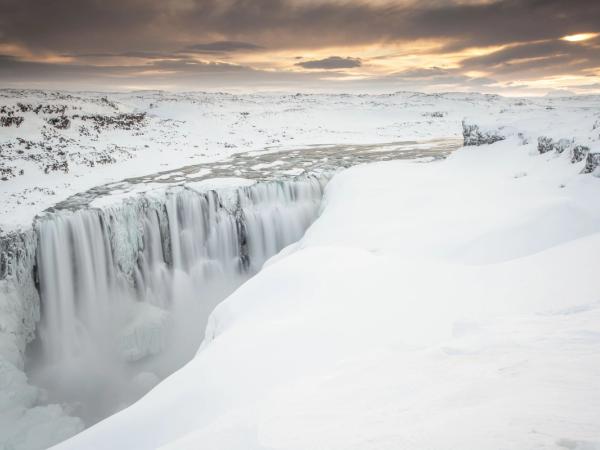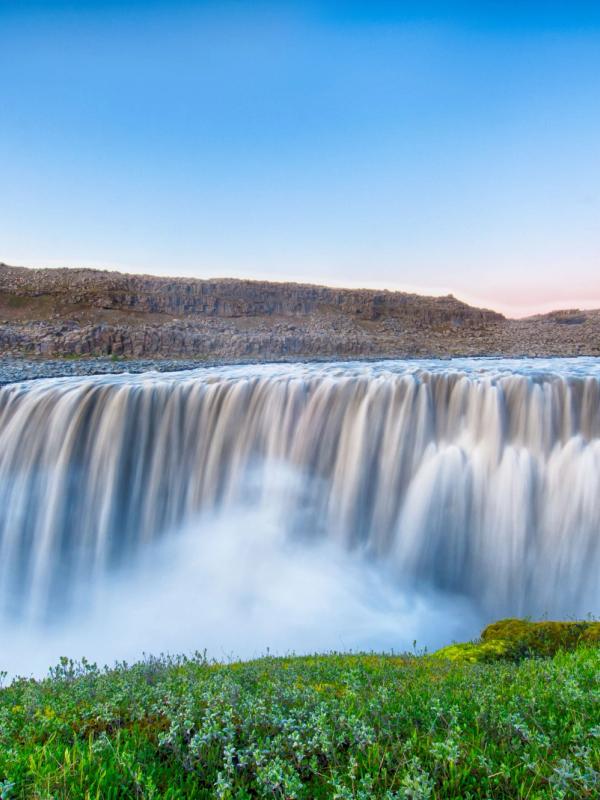
Dettifoss Waterfall: Complete Travel Guide
Welcome to your guide to visiting Dettifoss, one of Iceland’s most amazing waterfalls. Found in the Northeast, this natural wonder wows visitors with its powerful roar and stunning canyon views. Whether you love nature, enjoy photography, or just want to explore Iceland’s unique sights, Dettifoss is a must-see.
This guide gives you everything you need to plan your trip. You’ll learn what makes the waterfall special, why it’s important, the best time to visit, what to pack, and nearby places to check out. Let’s dive in!
Why Visit Dettifoss?
Dettifoss is Europe’s second most powerful waterfall, only after the Swiss Rhine Falls. It’s a great example of Iceland’s wild, untamed nature. But its power isn’t the only thing that makes it special.
The waterfall is in Vatnajökull National Park, surrounded by rocky canyon walls and basalt formations that show off Iceland’s volcanic history. The water comes from the Vatnajökull glacier through the Jökulsá á Fjöllum River. Its milky-white color stands out against the dark volcanic rocks, making it a great spot for photographers. The water roaring is so strong that you’ll hear it even before seeing it.
Dettifoss is also connected to stories and pop culture. It was featured in the movie Prometheus as an early version of Earth and has inspired musical pieces.
Plus, its location makes for a perfect day of exploring. Close by, you’ll find other waterfalls like Selfoss and Hafragilsfoss. The area is part of the famous Diamond Circle, including places like Lake Mývatn and Ásbyrgi Canyon.
Recently released data from the Icelandic government revealed that Dettiffos (west side) was the seventh most-visited spot in Iceland in 2024, with 236,738 visitors. That many people can’t be wrong!
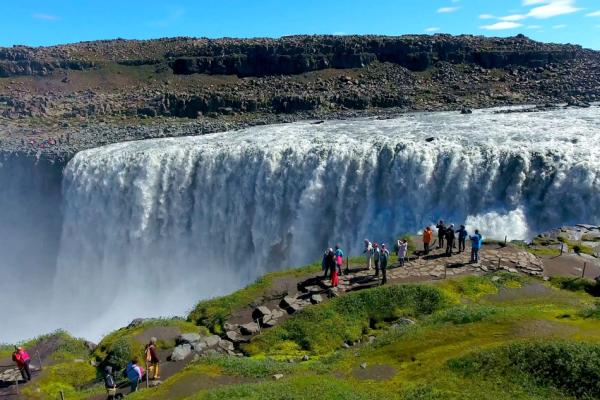
Dettifoss Facts & Features
It’s good to know some facts before you visit the waterfall. Here’s some key information to improve your visit.
Dimensions
- Height: 44 meters (144 feet)
- Width: 100 meters (328 feet)
Water Flow
- It flows at an average of 193 cubic meters per second, making it Iceland’s second-largest waterfall by volume (after Urriðafoss).
Location
- Found in the Jökulsárgljúfur canyon in Vatnajökull National Park, Northeast Iceland.
Geology
- The water comes from the Jökulsá á Fjöllum River, which carries glacial sediment from Vatnajökull, giving it a grayish-white color.
- Surrounded by basalt columns and volcanic rocks, showing Iceland’s fiery past.
Cultural Highlights
- Featured in the movie Prometheus.
- Inspired Jón Leifs’s music piece Dettifoss (Op. 57).
- Known in Icelandic folklore as a place of great natural power.
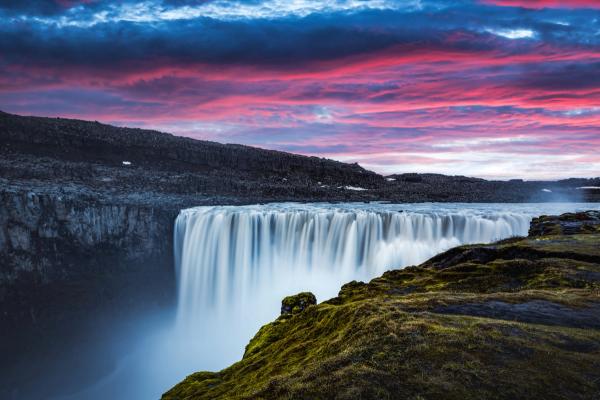
Where’s Dettifoss & How to Get There
Dettifoss is about 520 km (around a seven-hour drive) from Reykjavík. Although it doesn’t qualify as a day trip from the capital, It’s a must-visit stop on Iceland’s Ring Road or the Diamond Circle. Here’s how you can get there:
West Side Access (Route 862)
Take Route 862 from the Ring Road (Route 1) to reach Dettifoss. This route gives you amazing views as you get closer to the canyon.
- Road Condition: Paved and usually open all year.
- Parking & Walk: There’s a large parking lot and an 800-meter trail to a great viewpoint.
- Pros: Easy to drive, good for winter trips, and well-marked.
- Cons: There’s more mist from the waterfall, which can make it harder to take clear photos.
East Side Access (Route 864)
Take Route 864 from the Ring Road, heading east to Dettifoss. The road is a bit rougher but brings you closer to the waterfall.
- Road Condition: Gravel, usually open only in summer.
- Parking & Walk: A smaller parking lot with a short but steep trail to the waterfall.
- Pros: Closer views and less mist, making it easier to take photos.
- Cons: The gravel road can be bumpy, and the trail can be rocky and slippery.
Detour from Akureyri
Akureyri, known as the “Capital of the North,” is about two hours (150 km/95 miles) from Dettifoss. It’s a great base for exploring North Iceland and has all the city comforts you might need when you're not exploring.
The Best Time to Visit
The time of the year you choose to visit Dettifoss can really change your experience. Summer is probably the best season to go, but it also has some cons. Spring and winter both have their pros and cons, too. Here’s what each season has to offer:
Summer (June–August)
- Long days and warmer weather make summer the easiest time to visit.
- Roads are clear, so you can easily access both sides of the waterfall.
- The high water flow makes the waterfall even more dramatic.
- It’s peak season in Iceland, so most of the sights will have big crowds.
Spring & Fall (April–May, September–October)
- Fewer visitors and beautiful, changing scenery.
- Roads are usually open, but the weather can change quickly, so stay updated.
Winter (November–March)
- Visiting in winter is harder but can be absolutely stunning. You might even see the Northern Lights above the waterfall.
- The west side (Route 862) is usually more accessible but always check road updates.
- Snow, ice, and short daylight hours create a unique but sometimes risky setting.
What to Wear When Visiting Dettifoss
Iceland’s weather can change fast, so dressing right is key for a comfortable visit:
- Layers: Wear a base layer to keep sweat away, a warm middle layer, and a waterproof outer layer.
- Waterproof Jacket & Pants: The spray from Dettifoss can drench you, so stay dry.
- Hiking Boots: Choose sturdy boots with good grip for the rocky and often slippery paths.
- Winter Gear (if visiting in winter): Bring gloves, a hat, warm layers, and crampons if the trails are icy.
- Camera Protection: Carry a lens cloth or waterproof cover to protect your camera from the mist.
Surrounding Sites & Things to Do
Dettifoss is close to other great places to visit, whether you’re planning a short trip or exploring more of North Iceland.
Selfoss
Just upstream from Dettifoss, Selfoss is a smaller 10-meter (33-foot) horseshoe-shaped waterfall. Both are connected by a short, easy trail. It’s quieter than Dettifoss and has a gentler flow, making it great for photos, especially in the softer light of morning or evening. While it’s not as powerful, it has its own peaceful charm and is worth visiting.
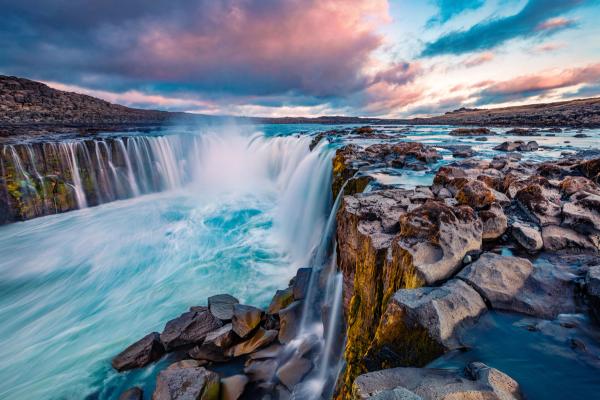
Hafragilsfoss
Hafragilsfoss is downstream from Dettifoss and drops 27 meters (89 feet) into the rocky Jökulsárgljúfur canyon. It’s less crowded, so you can enjoy the views without many people around. A short drive and a quick hike will take you there. The canyon and swirling water make it a beautiful spot for photos. If you’re looking for a quieter place nearby, this is a great choice.
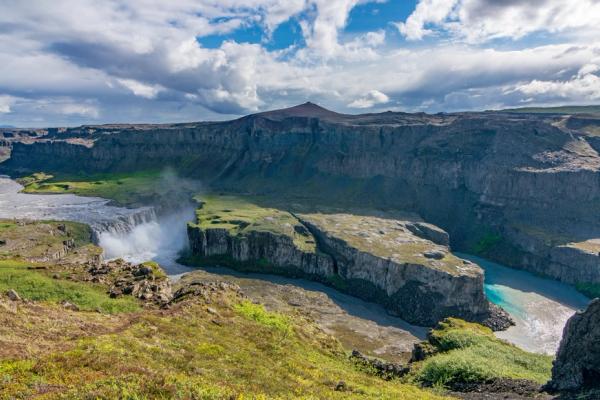
Ásbyrgi Canyon
Ásbyrgi is about 30 minutes from Dettifoss. This horseshoe-shaped canyon is connected to Norse myths. It’s said to have been made by Odin’s magical horse, Sleipnir. The tall cliffs, up to 100 meters (328 feet) high, surround a green forest and a small lake. With clear and easy trails, it’s a great spot for hiking and birdwatching. The calm and beautiful setting makes it one of the highlights of Vatnajökull National Park.

Lake Mývatn
Lake Mývatn is about 50 minutes from Dettifoss and is known for its geothermal spots and birdlife. You can check out the pseudo-craters at Skútustaðagígar or the bubbling mud pools at Hverir. The Mývatn Nature Baths, also called the “Blue Lagoon of the North,” are perfect for relaxing while enjoying views of the area. It’s a great mix of relaxing and exploring Iceland’s volcanic landscape.
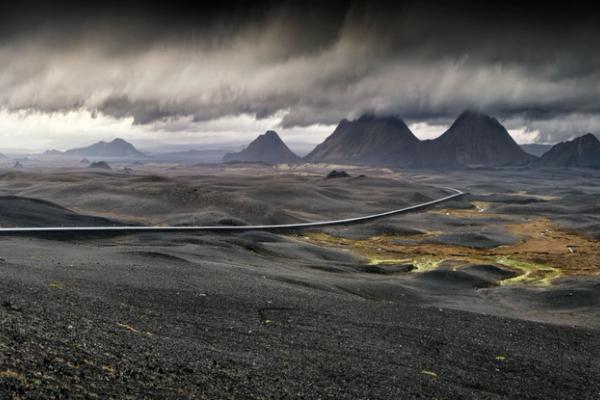
Akureyri
Two hours west of Dettifoss is Akureyri, Iceland’s second-biggest city. It’s a great base for exploring North Iceland, and there's plenty to do there. You can visit the Akureyri Botanical Gardens to see Arctic plants or the Akureyri Art Museum for local and international artwork. The harbor area has a peaceful vibe with cozy cafes and small shops. Akureyri also has geothermal pools, like Sundlaug Akureyrar, which has Iceland’s longest water slide. The Forest Lagoon is just 5 minutes away.
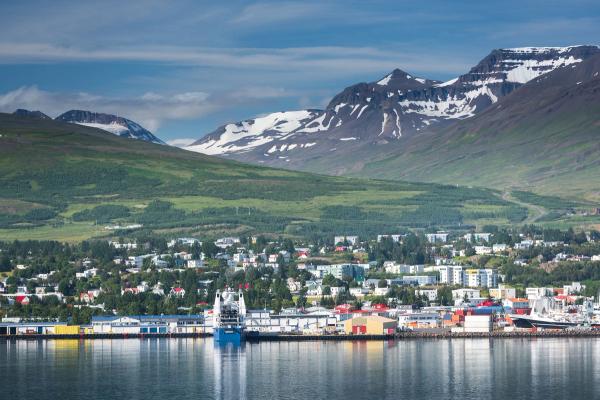
Diamond Circle
The Diamond Circle links Dettifoss, Ásbyrgi Canyon, Lake Mývatn, and Húsavík. Each stop has something special to offer. You can go whale watching in Húsavík or enjoy the geothermal baths at Lake Mývatn. Dettifoss is one of the main highlights, but visiting the whole route is a great way to see North Iceland’s beauty.
Conclusion
Dettifoss is one of Iceland’s most amazing waterfalls, surrounded by rocky canyons and full of history. Make sure you visit it as part of your Diamond Circle itinerary to see more of North Iceland.
Whether you visit in summer or winter, Dettifoss shows off Iceland’s wild side, with glaciers, volcanoes, and rivers coming together. Check the weather, dress warmly, and prepare for a trip you’ll always remember!

